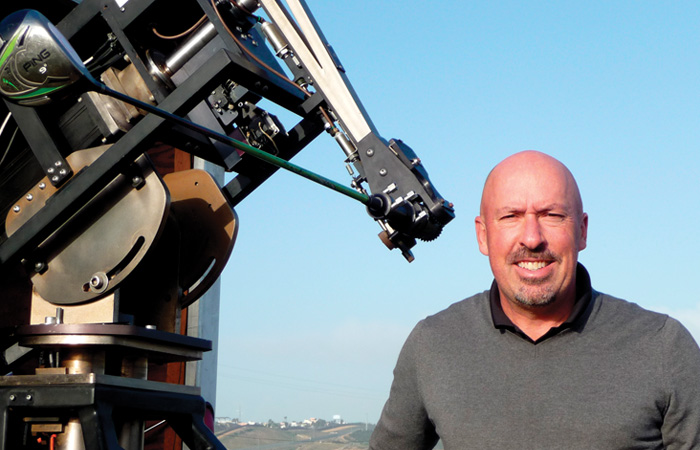Golf fans, the world over, often believe that the pros they watch on TV are practically infallible, hitting long, straight drives and possessed of immaculate short games. So, The Genesis Invitational, held at the Riviera Country Club since 1973, was a great opportunity to find out just exactly what the pros themselves think about their ball-striking capabilities. Having asked several pros whether they were ever ‘over the top’ during the Farmers’ Insurance, this time the question posed to them was a follow-on to that. What is your typical or stock shot with your long clubs or, in other words, which way do you prefer to curve your ball, if at all? And, when you miss, which way does your ball go?
Billie Horschel said that when he misses, his ball starts left and goes left. Did he know what might be the cause of such a miss? He replied that he gets “Flippy and too on top of the ball and I don’t clear enough.” To prevent it he believes that his lower body has to work better in transition in the downswing. “I get too much upper body, so the lower part of my body has to start the downswing and lead a little better.”

Tommy Fleetwood mentioned that his stock shot with his long clubs is always a draw. “If I’m struggling, I’ll just go to drawing it more and more.” What’s his miss? An over-push to the right to compensate. To avoid a miss, he works to neutralize the club’s path and neutralize the face and “a lot of lie angle stuff”.
Justin Suh said that his typical shape is always a fade. Does he ever mess that up under pressure? It would probably be more of a fade under pressure. He believes that it is caused by a steeper downswing, and he works on trying to get everything back to more neutral while on the range.
Aaron Rai prefers to be able to ‘shape the ball’. So, if he’s playing a fade, his stock miss would be to the right and if he’s playing a draw the miss would be to the left (he is right-handed). A symptom of trying to shape his shots both ways is that sometimes he might get too ‘fade-y’ while trying to fade and too ‘draw-ey’ while trying to draw. He likes to play with what he sees, and if a fairway was dead straight, he might be slightly more comfortable making a small cut.
Marcus Byrd was the 2023 Charlie Sifford Memorial exempt player. His usual shot is trying to hit a fade and his typical miss would start a bit more right and fade still more right. He believes he needs to get more control with where his ball starts. “It’s an easy shot for me to control.” He might very occasionally go left but knows the reason why. “My lower body stops moving and my arms keep going. With a fade the main thing you want to do is keep the chest and lower body rotating as fast as possible through the golf ball.”
Nick Hardy said, “I try to hit it straight,” and his typical miss is to hit it a bit right because he gets a little narrow and a little ahead of it in the downswing and fast with his hands. To avoid that he makes sure to keep his width in both the backswing and the downswing and feels that his clubhead is trailing his body. “If I pull the clubhead with my hands with the butt of the club too quick, that’s when I get the ‘rightness’.”
Austin Smotherman is yet another golfer who prefers his basic shot to be a fade. “I prefer to miss it to the right and feel fade with a lot of my long clubs.” He believes that for him his contact is better that way and he added, “If you’re already 200 and something yards out, I don’t mind missing it short right and in front of the green, because on tour long is no good to anywhere – typically greens are back to front or fast or whatever.” His miss is usually a heel, thin and missed short right. He might be left occasionally but mainly he has a slightly weak right miss, caused by too much right-side bend and hanging back, versus getting onto his left side. The more he can get to his left side, the more down he can get into the ball, his angle of attack is better and contact is more ‘on top of it’, more predictable, and when he cannot and is thus hanging back, his arms get thrown off his body and he gets a weak rightward miss. He mentioned that that move of his has been a ‘staple of his swing’ forever, something he is now working on correcting.

Matt Wallace also mentioned that his stock shot with his long clubs is a fade, and his miss is not a fade but is, in fact, a straight pull left, with no hook. He said it is caused by a clubface that is too square to the path. Too square? Yes, because his path is always left. Probably caused by his not wanting to see too much curve left to right, which causes a loss of distance and, as he added, over-curve is never a good thing. Which body part does he mis-position when he gets an undesirable result? He tilts slightly to the right which causes him to come more underneath, which makes his hand path get away from him slightly and then the face of his club is closed.
Another Matt, Matt NeSmith said, “I like to try and hit a little cut, a little butter fade. If I’m swinging ok my miss is probably a bit right but if I’m swinging bad it’s going to be left – a pull hook.” What causes it? I get my arms down a little too quick, I get pushed up towards the ball, my hands get a little high, and I hit off the toe.”
So as one can tell, the best golfers in the world usually try to hit the ball with one particular type of curve, which is usually a bit of a fade or cut. This is a much more natural movement for the body to make and can thus offer golfers greater consistency. It is also apparent that the pro golfers have their directional challenges too and can sometimes miss unexpectedly right or left and are not able to correct the miss in time. The takeaway for most golfers, then, is to work towards having a one-way miss and resign themselves to an occasional shot that goes way off line.